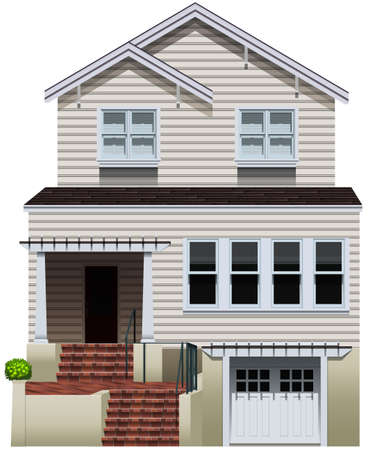1. Recognizing the Signs of a Plumbing Leak
Plumbing leaks can sneak up on you, often going unnoticed until they cause real damage. Knowing what to look for can help you catch problems early and avoid expensive repairs. Here are some common signs that may indicate a plumbing leak in your home:
Water Stains
One of the most visible signs of a leak is water stains on walls, ceilings, or floors. These typically appear as discolored patches, often yellow or brown, and may feel damp to the touch.
Unusually High Water Bills
If your water usage hasn’t changed but your water bill suddenly spikes, it could be due to a hidden leak. Compare your recent bills with past statements to spot any unexpected increases.
Musty or Moldy Odors
A persistent musty smell can be a sign of moisture buildup from a leak. Mold and mildew thrive in damp environments, so this odor shouldn’t be ignored.
Low Water Pressure
A drop in water pressure—especially if its limited to one area—might mean there’s a leak in the pipes leading to that fixture. If multiple fixtures are affected, the issue could be more widespread.
Common Signs and What They Might Mean
| Sign | Possible Cause |
|---|---|
| Discolored ceiling or wall spots | Leaking pipe behind surface |
| Soggy or warped flooring | Leak under floor or slab |
| Mold or mildew growth | Persistent moisture from hidden leak |
| Sudden spike in water bill | Ongoing undetected leak |
| Decreased water pressure | Burst pipe or partial blockage from leak |
Tip:
If you suspect a leak but can’t find the source, try turning off all faucets and appliances that use water, then check your water meter. If the meter continues to run, there’s likely a hidden leak somewhere in your plumbing system.
2. Checking Key Areas Where Leaks Often Occur
When it comes to spotting plumbing leaks in your home, knowing where to look is half the battle. Some areas are more prone to leaks than others due to frequent water use or hidden pipes. By regularly checking these key spots, you can catch small problems before they turn into costly repairs.
Under Sinks
The space under your kitchen and bathroom sinks is one of the most common places for leaks. These leaks often come from loose pipe connections, worn-out seals, or cracked drainpipes. To check, open the cabinet doors and look for signs of moisture, water stains, mold, or musty smells.
Around Toilets
Leaks around toilets usually happen at the base or between the tank and bowl. If you notice water pooling on the floor near the toilet or hear it constantly running, you might have a leak. Also, check for a spongy floor, which could mean long-term water damage beneath the surface.
Behind Appliances
Appliances like dishwashers, washing machines, and refrigerators with ice makers have water lines that can develop slow leaks over time. These leaks often go unnoticed because theyre out of sight. Pull the appliances away from the wall occasionally and inspect for dampness or discoloration.
In Basements and Crawl Spaces
Basements and crawl spaces often house important plumbing lines, making them hotspots for hidden leaks. Check exposed pipes for rust, corrosion, or dripping water. Also look at walls and floors for signs of water stains or mildew buildup.
Common Leak-Prone Spots at a Glance
| Location | What to Look For |
|---|---|
| Under Sinks | Damp cabinets, mold growth, dripping pipes |
| Around Toilets | Pooled water at base, running sounds, soft flooring |
| Behind Appliances | Damp floors or walls, discolored surfaces |
| Basements/Crawl Spaces | Rusty pipes, musty smell, visible drips or stains |
Regularly inspecting these areas can help prevent bigger issues down the road. Even if everything looks fine now, keeping an eye on these spots will help you stay ahead of potential plumbing problems.
![]()
3. Tools and Materials You’ll Need for Minor Repairs
Before you roll up your sleeves to fix a plumbing leak, it’s important to have the right tools and materials on hand. Most minor plumbing repairs can be tackled with just a few basic items that are easy to find at your local hardware store or home improvement center. Heres what you should keep in your DIY plumbing kit:
Essential Plumbing Tools
Having these tools available will help you handle most small leaks and adjustments without needing to call a professional plumber.
| Tool | Description |
|---|---|
| Pipe Wrench | Used to grip and turn pipes, especially when loosening or tightening fittings. |
| Adjustable Wrench | Great for tightening nuts and bolts of various sizes without switching tools. |
| Basin Wrench | Specially designed for hard-to-reach places under sinks. |
| Plumber’s Tape (Teflon Tape) | Wrap this around pipe threads to prevent leaks at connection points. |
| Pliers (Channel Locks) | Helpful for gripping, twisting, or holding parts steady during repairs. |
Common Repair Materials
You’ll also need some supplies to seal leaks and replace worn-out parts. These are affordable and easy to use even if you’re new to DIY repairs.
| Material | Use |
|---|---|
| Pipe Sealant (Pipe Dope) | A paste used on threaded connections to create watertight seals. |
| Silicone Caulk | Seals gaps around fixtures like sinks and tubs to prevent water seepage. |
| Rubber Washers & O-Rings | Replace old or cracked washers in faucets to stop drips. |
| Replacement Hoses & Tubing | If a supply line is leaking, its usually best to replace it entirely. |
| Buckets & Towels | Always handy for catching water and cleaning up spills during repairs. |
Pro Tip:
If you’re just starting out, consider buying a basic home plumbing tool kit. Many come with all the essentials and can save you money compared to buying items individually. Being prepared means you can act fast when a leak shows up—saving time, money, and avoiding potential water damage.
Stay Organized
Keep your plumbing tools and materials in one place so they’re easy to grab when needed. A small toolbox or storage bin labeled “Plumbing” works great for this purpose. That way, youre always ready for quick fixes around your home.
4. Step-by-Step Guide to Fixing Typical Leaks
Plumbing leaks can waste water and increase your utility bills if not addressed promptly. Fortunately, many common leaks around the home can be fixed with basic tools and a little know-how. Below are simple step-by-step guides to help you tackle typical plumbing issues like dripping faucets, leaky pipe joints, and running toilets safely and effectively.
Fixing a Dripping Faucet
Tools & Materials Needed:
- Adjustable wrench
- Screwdriver (Phillips or flathead)
- Replacement washers or cartridge (depending on faucet type)
- Plumber’s grease
Steps:
- Turn off the water supply under the sink.
- Plug the drain to prevent small parts from falling in.
- Remove the faucet handle using a screwdriver.
- Use a wrench to loosen and remove the packing nut.
- Take out the cartridge or stem and inspect for damage.
- Replace worn-out washers or install a new cartridge.
- Apply plumber’s grease to moving parts for smooth operation.
- Reassemble the faucet and turn the water back on to test.
Fixing Leaky Pipe Joints
Tools & Materials Needed:
- Pipe wrench
- Teflon tape or pipe joint compound
- Replacement fittings (if necessary)
- Towel or bucket (to catch drips)
Steps:
- Shut off the main water supply.
- Dry the area around the leaking joint thoroughly.
- If it’s a threaded joint, use a pipe wrench to unscrew the fitting.
- Clean threads and wrap them with fresh Teflon tape or apply joint compound.
- Screw the joint back together securely without overtightening.
- Turn water back on and check for leaks.
Fixing a Running Toilet
Tools & Materials Needed:
- Replacement flapper or fill valve kit
- Sponge or towel
Steps:
- Remove the tank lid and observe what’s causing the toilet to run (usually a faulty flapper or fill valve).
- If it’s the flapper, turn off water at the shut-off valve near the base of the toilet.
- Flush toilet to empty tank and remove old flapper from its hooks.
- Install new flapper according to package directions.
- If replacing fill valve, follow manufacturer instructions to remove old one and install new part.
- Turn water back on and let tank refill. Test by flushing several times to ensure leak is fixed.
Troubleshooting Quick Reference Table
| Leak Type | Main Cause | Quick Fix |
|---|---|---|
| Dripping Faucet | worn washer or cartridge | replace washer/cartridge, apply plumbers grease |
| Leaky Pipe Joint | worn threads or poor sealant | reapply Teflon tape or joint compound |
| Running Toilet | worn flapper or faulty fill valve | replace flapper or fill valve kit |
If you’re ever unsure about handling plumbing repairs on your own, don’t hesitate to contact a licensed plumber. But for these typical leaks, following these steps can save you time and money while keeping your home in good shape.
5. When to Call a Professional Plumber
Sometimes, fixing a plumbing leak on your own might seem like the quickest and cheapest solution. But there are situations where calling a licensed plumber is not only the smarter choice—it can actually save you time, money, and stress in the long run.
Signs Its Time to Call a Pro
If you notice any of the following issues, its probably best to leave it to an expert:
| Situation | Why You Need a Pro |
|---|---|
| Low water pressure throughout the house | This could signal a hidden leak or pipe corrosion that needs professional equipment to detect and repair. |
| Water stains or mold on walls and ceilings | These are signs of hidden leaks that may require opening up drywall or ceilings—tasks best handled by a pro. |
| Recurring leaks in the same area | If you’ve tried to fix it before and it keeps leaking, there might be a bigger issue with your plumbing system. |
| Sewage smells or backed-up drains | This could mean a problem with your sewer line. DIY attempts can make this worse and cause health hazards. |
| No access to shut-off valves or hard-to-reach pipes | A plumber has the right tools and experience to work in tight spaces without causing additional damage. |
The Benefits of Hiring a Licensed Plumber
- Expert Diagnosis: A licensed plumber can quickly identify the root cause of the issue using specialized tools like moisture meters, video inspection cameras, and pressure testing devices.
- Code Compliance: Professionals ensure repairs meet local building codes, which is especially important if youre planning to sell your home in the future.
- Warranty and Insurance: Most licensed plumbers offer warranties for their work and carry liability insurance in case something goes wrong during the repair.
- Long-Term Savings: While DIY fixes might seem cheaper upfront, improper repairs can lead to water damage, mold growth, and even higher water bills over time.
Quick Tip:
If youre unsure whether a leak is DIY-friendly or not, consider starting with a consultation. Many plumbers offer free estimates or low-cost inspections that can help you decide how serious the problem really is.


